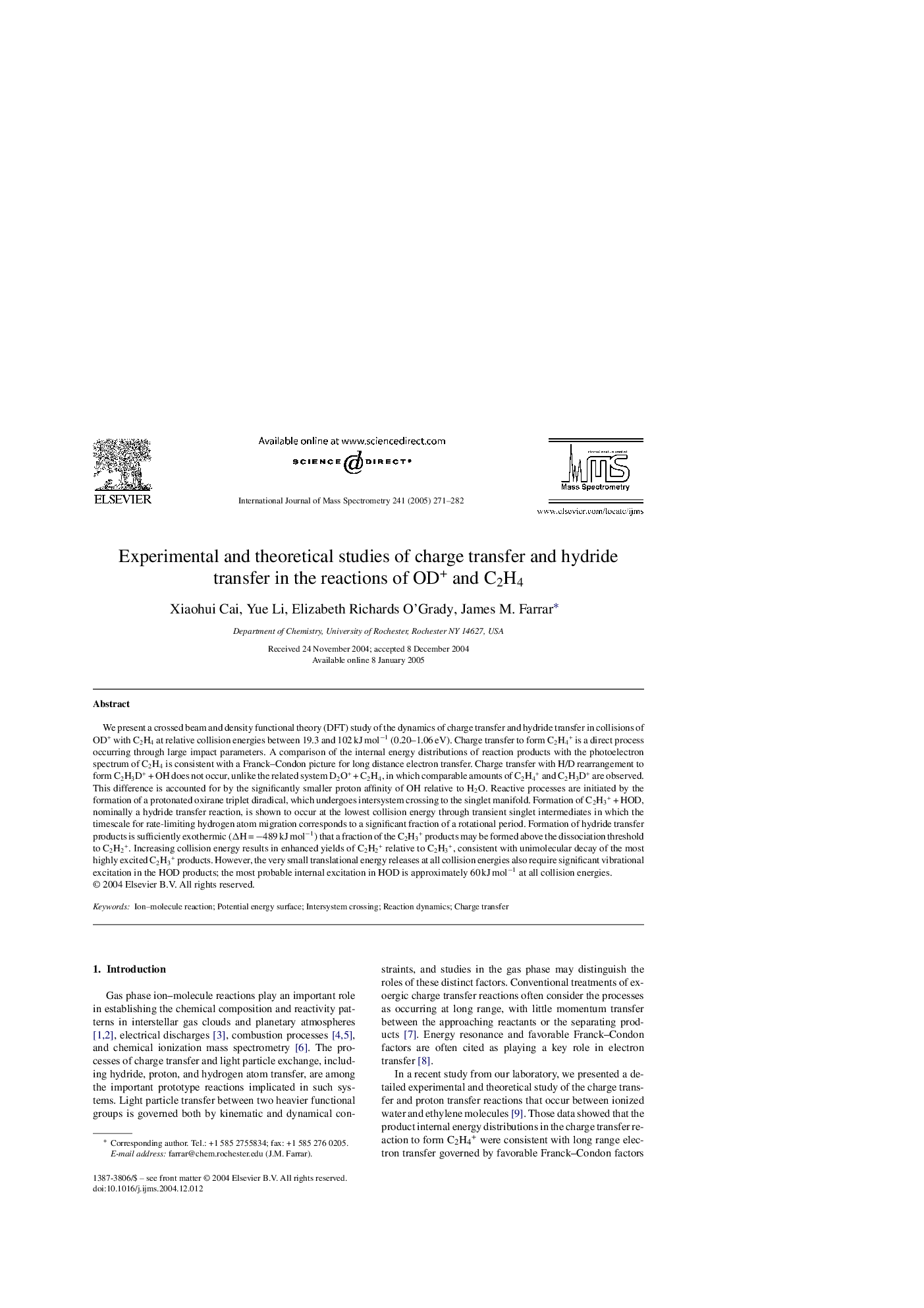| کد مقاله | کد نشریه | سال انتشار | مقاله انگلیسی | نسخه تمام متن |
|---|---|---|---|---|
| 9746764 | 1492407 | 2005 | 12 صفحه PDF | دانلود رایگان |
عنوان انگلیسی مقاله ISI
Experimental and theoretical studies of charge transfer and hydride transfer in the reactions of OD+ and C2H4
دانلود مقاله + سفارش ترجمه
دانلود مقاله ISI انگلیسی
رایگان برای ایرانیان
کلمات کلیدی
موضوعات مرتبط
مهندسی و علوم پایه
شیمی
شیمی آنالیزی یا شیمی تجزیه
پیش نمایش صفحه اول مقاله

چکیده انگلیسی
We present a crossed beam and density functional theory (DFT) study of the dynamics of charge transfer and hydride transfer in collisions of OD+ with C2H4 at relative collision energies between 19.3 and 102Â kJÂ molâ1 (0.20-1.06Â eV). Charge transfer to form C2H4+ is a direct process occurring through large impact parameters. A comparison of the internal energy distributions of reaction products with the photoelectron spectrum of C2H4 is consistent with a Franck-Condon picture for long distance electron transfer. Charge transfer with H/D rearrangement to form C2H3D+Â +Â OH does not occur, unlike the related system D2O+Â +Â C2H4, in which comparable amounts of C2H4+ and C2H3D+ are observed. This difference is accounted for by the significantly smaller proton affinity of OH relative to H2O. Reactive processes are initiated by the formation of a protonated oxirane triplet diradical, which undergoes intersystem crossing to the singlet manifold. Formation of C2H3+Â +Â HOD, nominally a hydride transfer reaction, is shown to occur at the lowest collision energy through transient singlet intermediates in which the timescale for rate-limiting hydrogen atom migration corresponds to a significant fraction of a rotational period. Formation of hydride transfer products is sufficiently exothermic (ÎHÂ =Â â489Â kJÂ molâ1) that a fraction of the C2H3+ products may be formed above the dissociation threshold to C2H2+. Increasing collision energy results in enhanced yields of C2H2+ relative to C2H3+, consistent with unimolecular decay of the most highly excited C2H3+ products. However, the very small translational energy releases at all collision energies also require significant vibrational excitation in the HOD products; the most probable internal excitation in HOD is approximately 60Â kJÂ molâ1 at all collision energies.
ناشر
Database: Elsevier - ScienceDirect (ساینس دایرکت)
Journal: International Journal of Mass Spectrometry - Volume 241, Issues 2â3, 1 March 2005, Pages 271-282
Journal: International Journal of Mass Spectrometry - Volume 241, Issues 2â3, 1 March 2005, Pages 271-282
نویسندگان
Xiaohui Cai, Yue Li, Elizabeth Richards O'Grady, James M. Farrar,